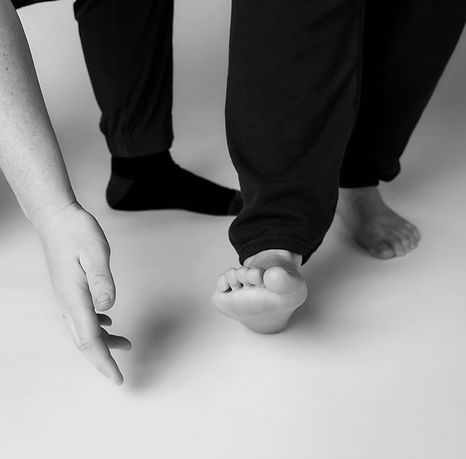


Manual Therapy
Is a specialized form of therapy that involves hands-on techniques to diagnose, treat, and prevent musculoskeletal and neuromuscular conditions. Therapists who specialize in manual therapy use their hands to mobilize, and massage soft tissues and joints, aiming to improve joint mobility, reduce pain, and enhance overall function. Manual therapy techniques are often used in conjunction with Neuro-based therapy to initiate and facilitate proper muscle recruitment to decrease pain.
Manual Therapy
Manual therapy can be beneficial to patients who have had a stroke or brain injury for various musculoskeletal and joint conditions, including hypertonicity/spasticity, shoulder pain, frozen shoulder, shoulder impingement, shoulder subluxation, hip/groin pain, foot drop, hammer toe and muscle contractures in the foot and hand. It is often used in combination with other therapy interventions such as Neuro-based therapy exercises, and patient education.
It's important to note that manual therapy for a patient who has had a stroke or brain injury should be performed by trained and licensed healthcare professionals, such as occupational therapists, physical therapists or osteopathic physicians. Before undergoing manual therapy, individuals should undergo a thorough evaluation to determine the most appropriate techniques for their specific condition.
Hypertonicity/Spasticity: Is a disruption in the communication signals between the muscles and the nervous system. When there is damage to the pathways, muscle/s or other tissue can involuntarily increase tension or tone, making it more rigid than usual.This can occur in various parts of the body, such as muscles, blood vessels, or other tissues. Unmanaged hypertonicity/spasticity can lead to contractures.
Hand/Foot Contractures: Refer to the abnormal shortening or tightening of muscles, tendons, or other soft tissues, leading to a reduction in joint movement and flexibility. This condition can result in a permanent or temporary loss of range of motion in the affected joint. Contractures commonly occur in the joints of the arms and legs.
Shoulder Pain: For individuals who have had a stroke or brain injury, can have various causes, ranging from minor muscle stiffness/ridged to more serious conditions (Frozen shoulder, Shoulder Impingement, Shoulder Subluxation). It's important to note that persistent or severe shoulder pain should be evaluated by a healthcare professional for an accurate diagnosis and appropriate treatment.
Frozen Shoulder (Adhesive Capsulitis): This condition involves the inflammation and tightening of the shoulder capsule, resulting in pain and restricted movement. It commonly develops gradually over time.
Shoulder Impingement: This occurs when the tendons of the rotator cuff become compressed or "impinged" between the bones of the shoulder, causing pain, especially during arm movement.
Shoulder Subluxation: Occurs when the humeral head partially slips out of the socket but does not completely dislocate. For individuals with hemiplegia from a stroke or brain injury, shoulder subluxation is commonly caused by instability of the shoulder joint due to decreased muscle activation and/or recruitment from rotator cuff muscles and/or trauma. This condition is often associated with the stretching or tearing of the ligaments and supporting structures around the shoulder depending on severity.
Hip/Groin Pain: immobility and muscle imbalance with individuals who have had a stroke or brain injury with hemiplegia, can lead to secondary complications, such as muscle contractures or strain, which may manifest as groin pain.
Drop Foot: Is a condition characterized by the inability to lift the front part of the foot, leading to dragging the toes along the ground while walking. Damage to the brain, particularly in areas controlling motor function, can result in weakness or paralysis, which can significantly impact a person’s gait or mobility.
Hammer Toe: Is a deformity of the toe/s characterized by an abnormal bending or curling of the toe joint, causing the toe to resemble a hammer. This condition can be flexible or rigid, and it may be accompanied by pain, discomfort, and difficulty wearing shoes.

